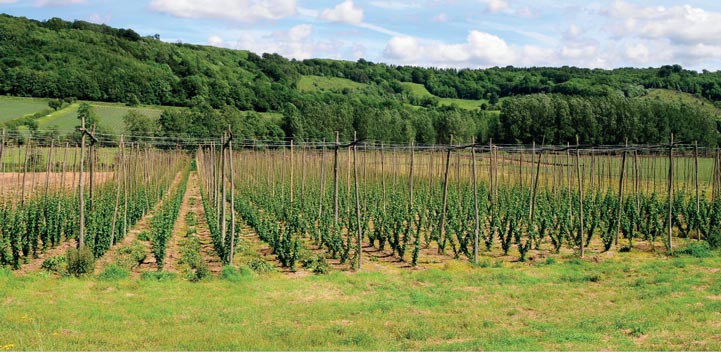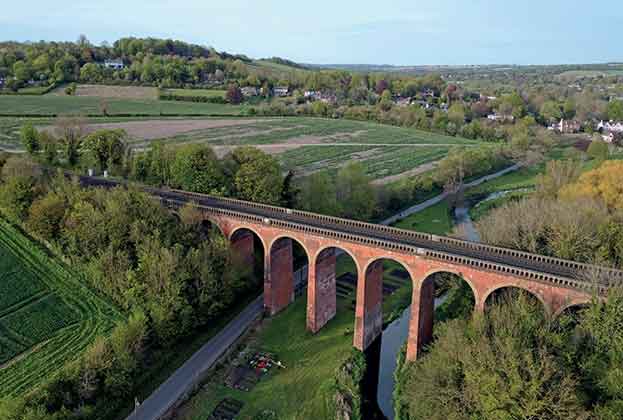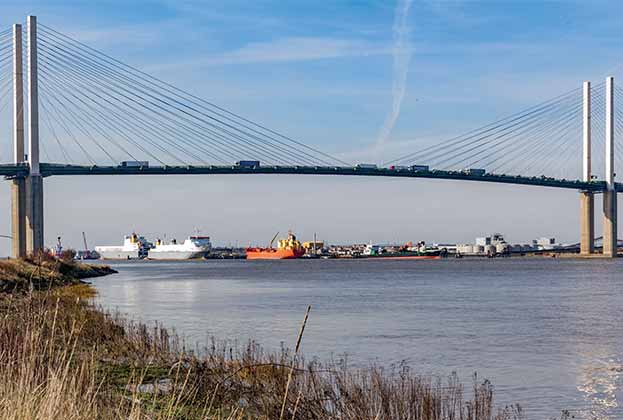Activity in the farmland market is picking up following the record lows of 2020
Popular with farmers and lifestyle owners, farmland in the South East is distinguished by its warm climate, good quality land and attractive landscapes. Coastal regions in Sussex are some of the sunniest in the UK, meaning temperatures exceed that of the rest of the country and the region is less prone to frosts. This temperate climate makes the region particularly suitable for more specialist agricultural production including soft fruits, hops and wine. According to Defra, the biggest contributor to the value of output in the region is fruit. In addition, natural capital is anticipated to become a major market driver.

Supply and demand
The number of acres of farmland publicly advertised across Great Britain increased 6% in 2021 in comparison to the record low of 2020. In the South East, supply increased further with 12% more land being brought to the market than the previous 12 months.
However, this still fell short of the five- and ten-year averages. At a county level, this trend remains – less land is being brought to the open market.
However, Savills data indicates that in the south of England, privately advertised deals made up approximately 14% of transactions in 2021. This indicates that there are higher activity levels in the market, but with strong commodity values and ongoing economic uncertainty, landowners are cautious about bringing land to the market.
Despite the lack of market activity on the supply side, demand for farmland remains strong. The favourable tax position, the reliable returns and the emerging market for ecosystem services has seen interest in the asset class climb in recent months.
Values
In the South East, the value of ‘all land types’ hit £8,393 per acre and prime arable achieving £9,646 per acre. Whilst these values have not recovered to the previous highs in 2014, growth was recorded across each land type in the last 12 months.
Following a similar trend to that seen across the country, it was the value of poor livestock land that grew the fastest in 2021, increasing 8%. The sustained lack of supply is driving values higher as more active purchasers compete in a crowded market.
Forecasts and emerging trends
Land is the only asset class that can be both a source and a solution to climate change. This will drive a change in use of a quarter of the UK’s land over the next 30 years, directly impacting farmland values; Canterbury City Council recently launched a ‘Call for Sites’ through which it is inviting land agents and landowners to put forward potential sites to help the district meet its climate change and ecological goals. The warm climate in the South East lends itself to renewable energy but also expanding high-value produce such as viticulture and horticulture.
Land is the only asset class that can be both a source and a solution to climate change
Andrew Teanby, Associate Director, Rural Research
Opportunities for diversifying away from food production will include ecosystem services such as the provision of Biodiversity Net Gain credits, Nitrate Neutrality credits or carbon sequestration. Despite the falling subsidy support, these emerging markets will support farm incomes and generate further demand for farmland, resulting in growth in values in the short term. We have forecast that prime arable land will show 2.5% growth over inflation annually, whilst poorer livestock land is predicted to grow 6% annually over inflation for the next five-year period.
Read the articles within South East Development: Unlocking potential below
.jpg)

